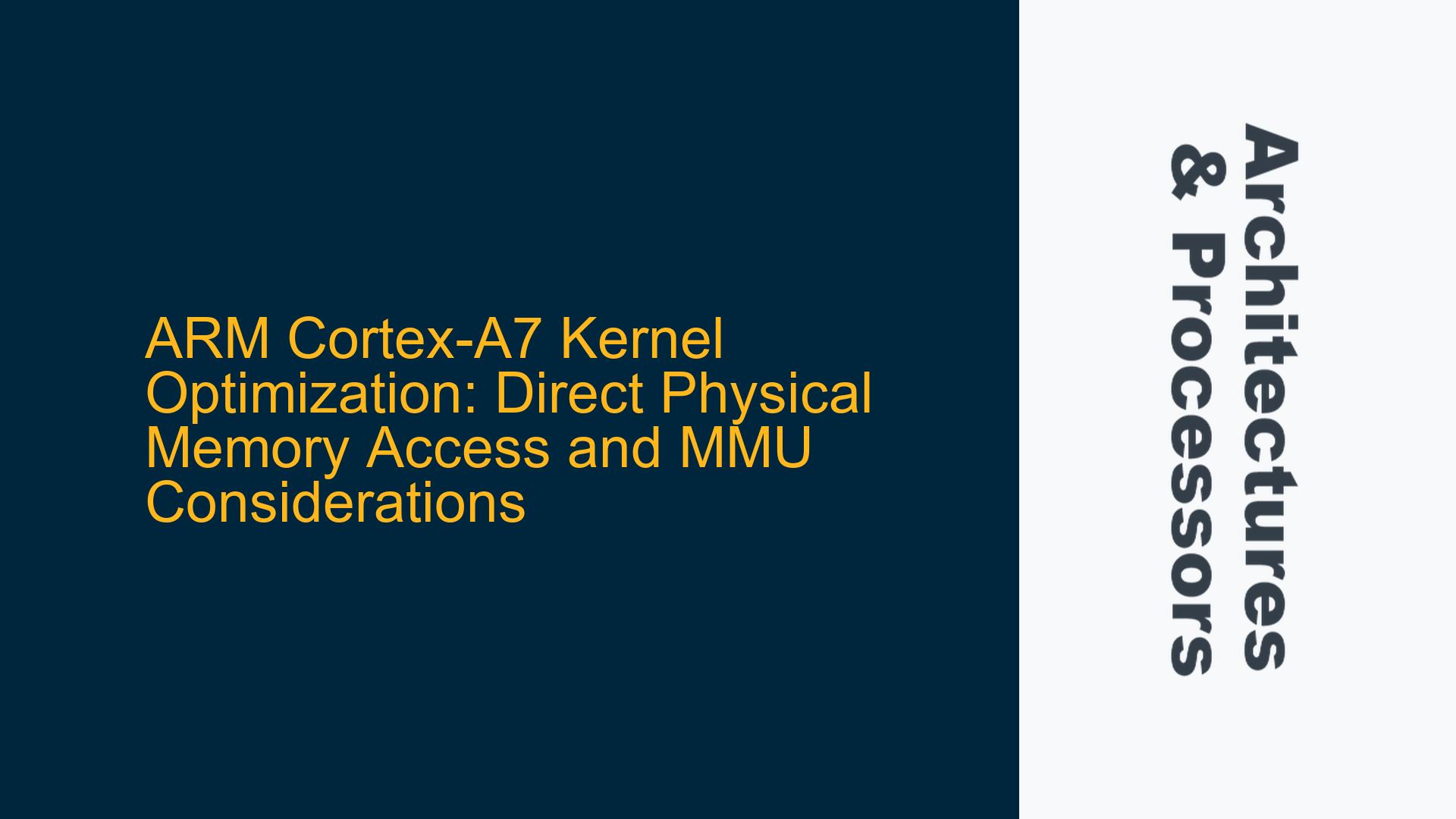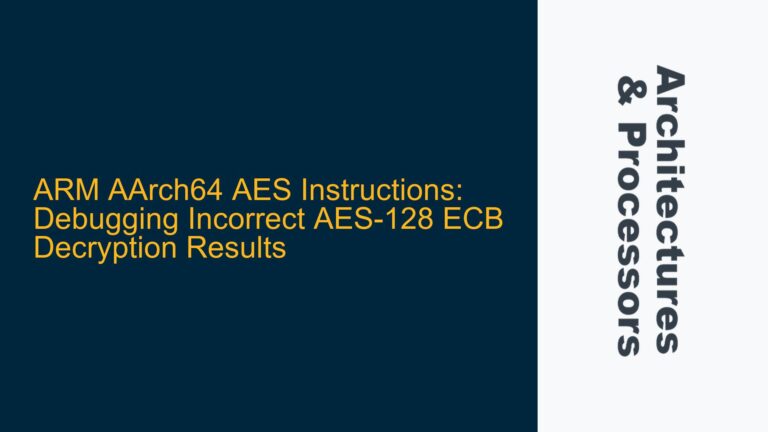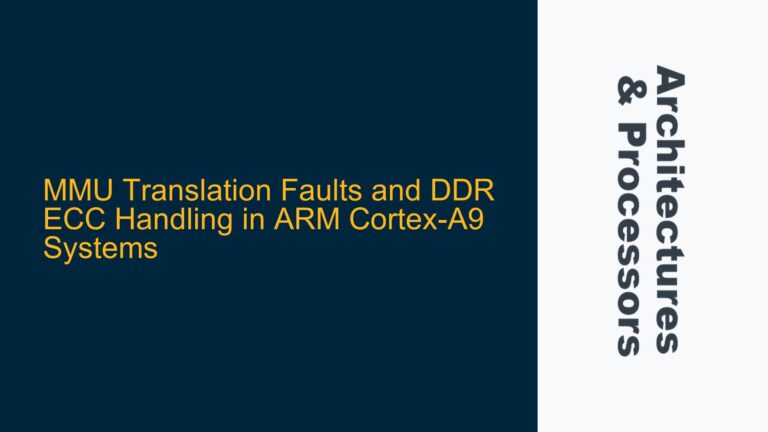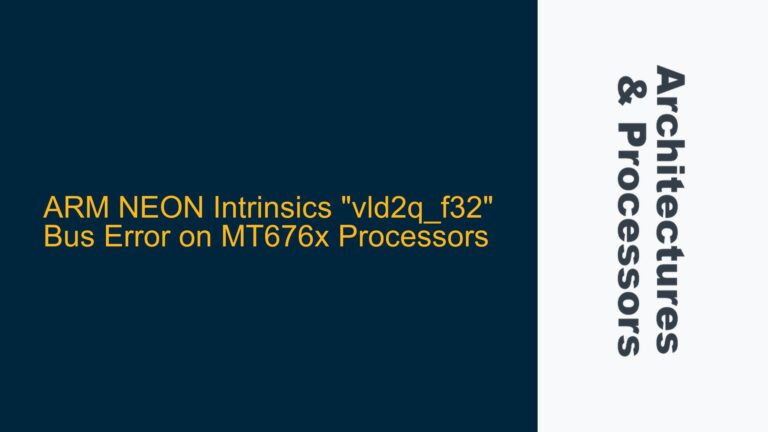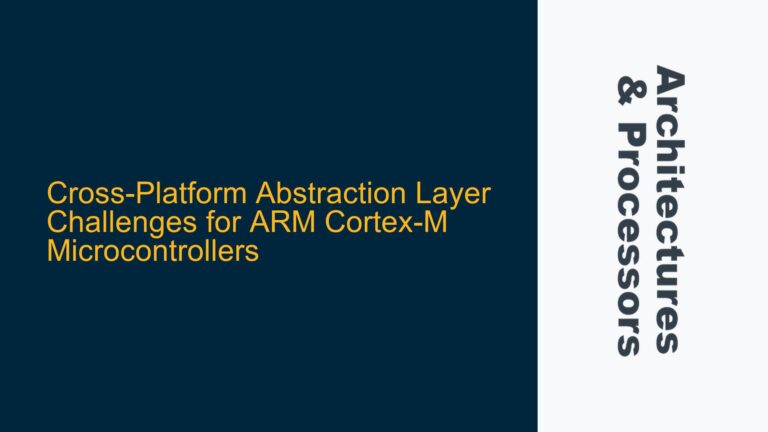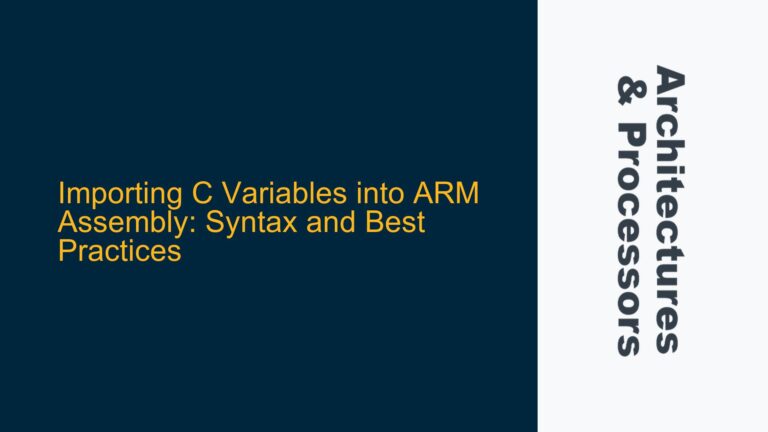ARM Cortex-A7 Kernel-Level Optimization Challenges and Physical Memory Access
The ARM Cortex-A7 processor, widely used in embedded systems, presents unique challenges and opportunities for kernel-level optimization. One of the most common questions from developers new to ARM architectures is whether direct physical memory access is possible at the kernel level and how it impacts system performance. The Cortex-A7, being a part of the ARMv7-A architecture, supports Memory Management Unit (MMU) functionality, which complicates direct physical memory access. The MMU is responsible for virtual-to-physical address translation, memory protection, and cache control. Disabling the MMU to access physical memory directly is a tempting approach, but it comes with significant trade-offs, including the loss of cache functionality and potential system instability.
Kernel-level optimizations on the Cortex-A7 often involve balancing performance, power consumption, and system reliability. Direct physical memory access can bypass the overhead of virtual memory management, potentially improving performance for specific use cases. However, this approach requires a deep understanding of the ARM architecture, including the role of the MMU, cache coherency, and memory barriers. Without proper handling, disabling the MMU can lead to unpredictable behavior, especially in multi-core systems where cache coherency is critical.
The Cortex-A7 processor also features a hierarchical cache system, including L1 and L2 caches, which are tightly coupled with the MMU. When the MMU is disabled, the cache behavior changes, and the system may lose the benefits of caching, leading to increased memory latency and reduced performance. Additionally, the ARM architecture provides mechanisms like Data Synchronization Barriers (DSB) and Instruction Synchronization Barriers (ISB) to ensure proper memory ordering and cache management. These mechanisms must be carefully utilized when performing kernel-level optimizations to avoid subtle bugs and performance bottlenecks.
MMU Disabling and Cache Availability in ARM Cortex-A7 Systems
Disabling the MMU on an ARM Cortex-A7 processor is a non-trivial operation that requires careful consideration of its implications. The MMU is not just responsible for address translation; it also plays a crucial role in cache management and memory protection. When the MMU is disabled, the processor operates in a mode where virtual addresses are treated as physical addresses. This mode can be useful for low-level debugging or specific performance-critical tasks, but it comes with significant limitations.
One of the primary concerns when disabling the MMU is the impact on cache availability. The Cortex-A7’s cache system relies on the MMU for cacheability and shareability attributes. These attributes determine whether a memory region is cached, how it is cached, and whether it is shared across multiple cores. When the MMU is disabled, these attributes are no longer enforced, and the cache behavior becomes undefined. In most cases, the caches will continue to operate, but their behavior may not be consistent or predictable. For example, cached data may not be flushed properly, leading to data corruption or stale data being read from memory.
Another critical consideration is the impact of MMU disabling on multi-core systems. The Cortex-A7 is often used in multi-core configurations, where cache coherency is maintained through hardware mechanisms like the ARM Coherency Extension (ACE). Disabling the MMU on one core can disrupt cache coherency across the entire system, leading to inconsistent memory views and potential race conditions. This is particularly problematic in real-time systems where deterministic behavior is essential.
Furthermore, disabling the MMU can expose the system to security vulnerabilities. The MMU provides memory protection by isolating kernel and user-space memory regions. Without the MMU, all memory becomes accessible, increasing the risk of unauthorized access or malicious code execution. This is especially concerning in systems that handle sensitive data or operate in untrusted environments.
Implementing Kernel-Level Optimizations with MMU and Cache Management
To achieve kernel-level optimizations on the ARM Cortex-A7 without compromising system stability, developers must adopt a structured approach that leverages the processor’s features while mitigating the risks associated with direct physical memory access. The following steps outline a comprehensive strategy for optimizing kernel code while maintaining MMU and cache functionality.
First, developers should profile their kernel code to identify performance bottlenecks. Tools like ARM DS-5 Development Studio or Linux perf can be used to analyze cache misses, branch mispredictions, and other performance metrics. Once the bottlenecks are identified, targeted optimizations can be applied, such as reducing memory access latency, optimizing data structures for cache locality, and minimizing context switches.
Second, instead of disabling the MMU entirely, developers can use memory-mapped I/O (MMIO) to access physical memory regions directly. MMIO allows specific memory regions to be mapped into the virtual address space, enabling direct access without disabling the MMU. This approach preserves cache functionality and memory protection while providing the performance benefits of direct memory access. The ARM architecture provides mechanisms like the Translation Table Base Register (TTBR) and Memory Attribute Indirection Register (MAIR) to configure MMIO regions with the appropriate cacheability and shareability attributes.
Third, developers should ensure proper cache management when accessing physical memory. This includes using Data Synchronization Barriers (DSB) and Instruction Synchronization Barriers (ISB) to enforce memory ordering and cache coherency. For example, after writing to a memory-mapped register, a DSB instruction should be used to ensure that the write is completed before proceeding. Similarly, an ISB instruction should be used after modifying the MMU configuration to ensure that the changes take effect immediately.
Fourth, developers should consider using ARM TrustZone technology to enhance system security while performing kernel-level optimizations. TrustZone provides a secure execution environment that isolates sensitive operations from the rest of the system. By leveraging TrustZone, developers can perform direct physical memory access in a controlled manner, reducing the risk of security vulnerabilities.
Finally, developers should thoroughly test their optimized kernel code in a variety of scenarios, including multi-core configurations and high-load conditions. This includes stress testing the system to ensure that cache coherency and memory ordering are maintained under all conditions. Tools like ARM Fast Models and FVP (Fixed Virtual Platforms) can be used to simulate different hardware configurations and identify potential issues before deploying the code on actual hardware.
In conclusion, kernel-level optimizations on the ARM Cortex-A7 require a deep understanding of the processor’s architecture and careful management of the MMU and cache systems. By adopting a structured approach and leveraging the ARM architecture’s features, developers can achieve significant performance improvements while maintaining system stability and security.
